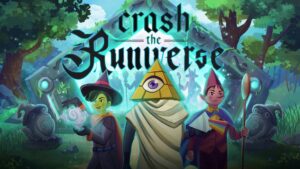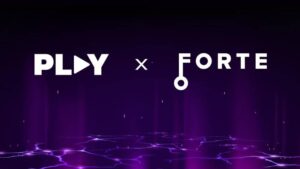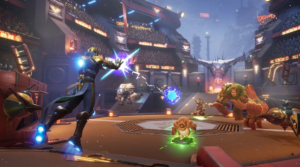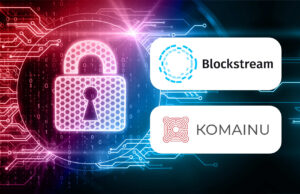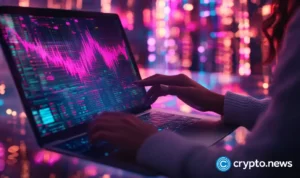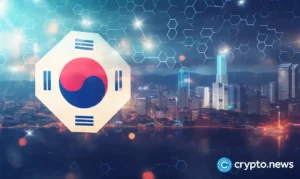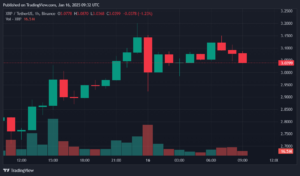
In the latest episode of the Blockchain Gaming World podcast, editor-in-chief Jon Jordan talks to The Sandbox’s COO Sebastien Borget about how the metaverse project progressed in 2024 and what’s in store for 2025?
From your point of view, how did Alpha Season 4 turn out? What did you learn from it?
Sebastien Borget: The end of 2024 has been very exciting, and it’s set up 2025 on the same track. We’ve seen the general crypto market getting exciting again with Bitcoin reaching $100,000. On the other side, we’ve definitely proven that the metaverse is far from dead, it’s kicking and alive, and boasting a lot of players.
Alpha Season 4 ran for 10 weeks from mid-October to mid-December. We had 100 experiences featured, including 40 major brands and 60 of the best UGC experiences. We had over 580,000 unique players across those 10 weeks who actively spent an average of two hours playing. They completed quests and engaged in blockchain transactions.
[embedded content]
I think we had close to over 1.2 million blockchain transactions. We had 2.6 million NFTs sold or distributed as rewards. 330,000 unique NFTs sold, which is quite exciting. It proves there’s demand for NFTs with true utility. We’ve also seen demand for virtual LANDS rise again and the price of the SAND token has been rising recently, following Bitcoin’s curve.
Season 4 not only had that amazing amount of players, but it was also the highest number of unique players we’ve ever had in a season or an event. That definitely leads us nicely into 2025.
So what are we planning to do this year? In a nutshell, the idea is to do what we’re already great at doing even better.
I think the model of Season 4, and seasons in general, with regular event liveops where we bring those top notch brands, experiences and rewards, is driving audience and engagement. So we’ll have four seasons next year, one major season per quarter, with season 5 already in production. We’ll also announce exciting top brands that haven’t yet been announced.
Of course we’ll have new gameplay features, based on another major update of our Game Maker and game clients, including multiplayer, new abilities for avatars etc. No spoilers yet, but stay tuned.
Would one of the weaknesses of having seasons be that you don’t have the persistence? You pus players into new seasons and then shut them down.
That’s a fair point. The big difference between now and a year ago is indeed that The Sandbox didn’t have much to do in between those seasons, but now we’ve opened the publishing program for all creators so any LAND owner could open the experience. We have close to 2,000 unique experiences and games that are live on the map which can be entered and explored at any time, so as a LAND owner and creator you can still drive your own audience into your game. You can run your marketing and reward systems and so on. But the core purpose of the season is still to drive through marketing, through the brands, through the rewards, to onboard new users.
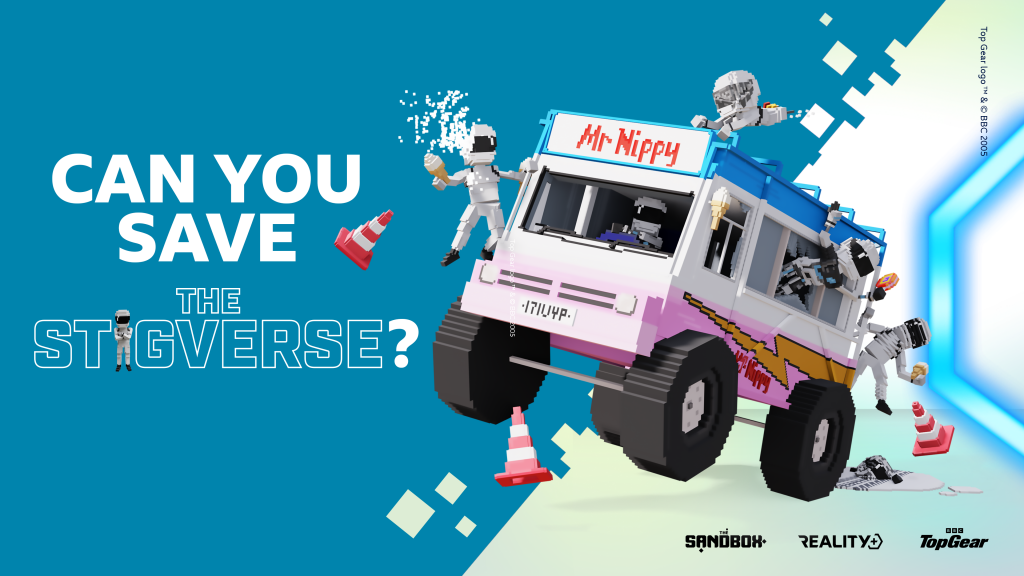
Six months to a year between every season is a long wait and the audience in web3, and in gaming in general, is not as patient. With more regular releases such as seasons we can provide the meta gameplay that gives a reason for players to keep exploring, engaging, and collecting exclusive rewards from their favorite brands. However they can still onboard at any point of time.
Right after Season 4, we had ‘Season Greetings’ running, and it still had a higher amount of players than before the season, so we’re proving that we are building up the audience over time.
It’s a model we’ve seen before, we didn’t invent the wheel. Gamers are familiar with the concept of peak-time of activity and a bit of time to rest before you jump back into the action.
Does this approach mean it’s hard to tell when The Sandbox officially goes live?
That’s right. We still consider ourselves in alpha and probably in 2025 we’ll move to beta. We consider the quality of the product; the creator tools, the user experience and so on, drastically improved. If you compare The Sandbox four years ago or even a year ago to today, it’s night and day in how we’ve improved the quality of the gameplay experience.
Many of the creators on the platform are first time creators. Few of them have a background in making games, marketing and understanding user acquisition, so they are very passionate and super talented. We ran The Sandbox Awards last month in Los Angeles and Paris, rewarding their creativity and we’re educating them progressively on how to build their own communities and audience as they publish those games on the platform. The seasons drive a lot of audience that indeed flows into those experiences and games.
We hope that as we introduce new builder challenges, new abilities and leaderboards for the creators this year, they’ll be able to engage even more and start to monetize as well as build their own sustainable community beyond just the main season that The Sandbox is doing.
If you look at Fortnite, it’s kind of the same. You have the UEFN on one side, you have the main Fortnite and still regular seasons coming in. It takes time, but some of those creators of the UEFN side are starting to generate enough attention to be sustainable on their own outside of the Fortnite gameplay.
You mention mobile. Where are you with those plans?
A few realizations came as we were working on mobile. First of all, the technology. We’ve been building with Unity and the Unity team to bring The Sandbox to mobile, but 2024 has been a terrible year for the video games industry in general. Many companies have been hit by layoffs and Unity was one of them. So that delayed our ability to release The Sandbox on mobile.
Along the way, we also kept running into different technical challenges of understanding how much memory a mobile device can handle and what we can run on those. It’s not that easy to run those huge worlds with voxel graphics and effects straight on. It requires a lot of adaptation.
We felt that might not be the most straightforward way. We haven’t stopped, we still have something in mind for mobile, but we came up with a different strategy, which makes much more sense. It’s called the Voxel Games Program.

We announced and launched it at Gamescom in August 2024 and the idea is that instead of trying to bring no-code games made on PC to a mobile platform, why don’t we just work with mobile game studios, natively, who are experts. These can use any engine directly, Unity, Unreal, HTML5, and we can co-produce games with them. They publish those games, and their only requirement is they have voxel graphics with content made with our editor, so there is a graphic consistency.
Even though they will be free-to-play with in-app purchases or ads, they will also enable users to connect their wallets, allowing them access to their SAND tokens, avatars, LAND, and other digital assets. Ultimately, that means you can have mobile games that are optimized for the platform, games that have already proven successful. It can bring new users to those games and we’re demonstrating a true use case of interoperability.
The idea of the metaverse is the possibility for anyone to play with their avatar across many different games and platforms and virtual worlds as seamlessly as possible, without any technical constraints. And that premise is still far from being achieved for many reasons, including technical constraints. You can maybe use an avatar across different platforms, but that’s merely it as of today.
There’s already two game studios working on co-production with us, Frag Game and DevAuth, which are part of the Voxel Games Program. There are many more in the pipeline, and that’s extended our vision for The Sandbox, that it can be much more than the current platform. It can be a whole gaming ecosystem powered by the SAND token that leverages the 6 million user wallets we have, the 25,000 LAND owners, and 60,000 NFT holders. SAND is one of the top 100 cryptocurrencies according to CoinMarketCap. It’s one of the top five gaming tokens.
So the idea at the moment is no mobile client in which you could experience everything in the PC version on mobile, but more standalone games that link back into The Sandbox with all the assets you have there?
Exactly. Think of the current platform as just one way to onboard first-time creators. People can create games with no code. But The Sandbox can be a much bigger gaming ecosystem across multiple platforms where, at the end of the day, in a fully decentralized ecosystem, you own your assets, you play with your assets across different platforms.
Talking about decentralization, the major accomplishment of last year has been the launch of The Sandbox DAO. We introduced it in May 2024. We had 16 SIP (The Sandbox improvement proposals) that went live, submitted by the community and voted upon. And at the end of the year, we also introduced delegation to increase engagement and participation in voting.
So the vision over time has become much less of a single monolithic product?
I think we have the ability, absolutely. The success of the metaverse really depends on three core aspects. One is the product and the technology. The second is the content, and the third is the ecosystem. We don’t want to feel tied to only one product or one technology to succeed, but we still have to start somewhere.
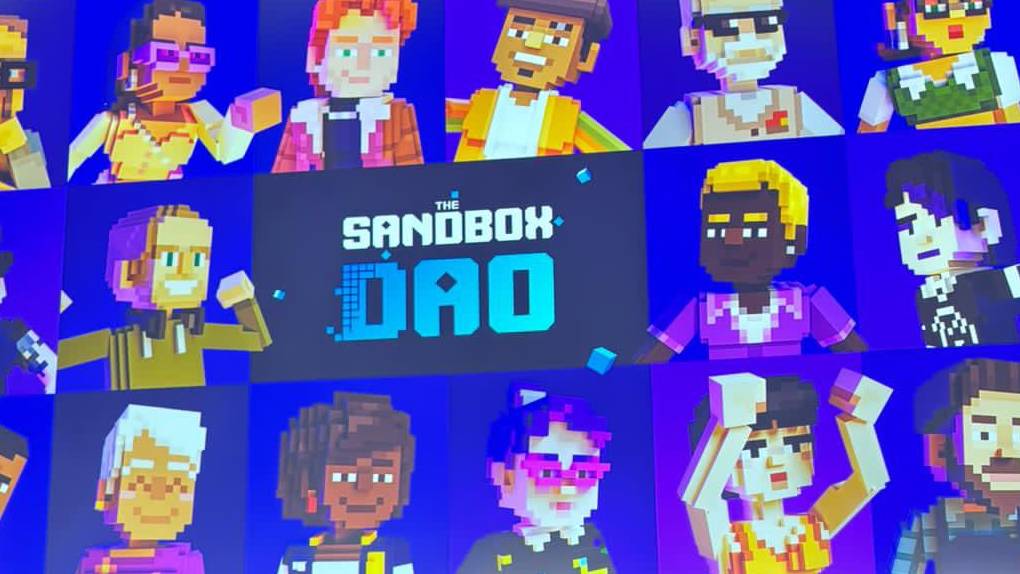
The fact that we’ve been so focused right from the start on empowering creators and giving them the ability to create experiences without any code was instrumental to the success we have today. From there, we can start exploring new possibilities, new platforms, different experiences, and co-production of games with existing studios.
You can also extend that to Discord and Telegram, and all formats of apps that can interact with the assets that the user owns.
Is this more decentralized approach something you’ve learnt through the process?
We come from a mobile game background and it was rather easy to build just one mobile game and rely on the App Store for the distribution.
With The Sandbox, we realized that we are indeed building everything; the marketplace, the creation tools, the map, the launcher, the client, the Game Maker tools, etc. so it’s become a bigger project than just building a game, but I don’t think we took the wrong path to what we wanted to do. Our vision has always been to empower the creator, so we started with the creation tools.
We attracted many creators. The quality of the contents in UGC, you might have 99% own really weird things, but it’s exciting. And maybe 1% will one day become this massive hit game. It’s bound to happen, just by the numbers, by the quality of the creation tools improving, and the quality of the distribution.
There’s no right or wrong way, you just have to figure out what makes sense for you. Maybe The Sandbox will have its own game at some point, maybe our path is more focused on providing the tools, the platform, and every aspect of all the different layers to empower the creator.
Finally, how do you see the emergence of AI agents in gaming and the metaverse?
It’s really interesting to follow how the AI industry is maturing and what AI can bring to the table for the metaverse. First of all, we’ve seen how gen AI can work well for 2D games and certain 3D games with low poly graphics, but in The Sandbox, due to our voxel aesthetic, AI technology is not right at the moment. It’s not yet at the level of quality we expect for offering it to our creators. In six months it might change.
However, AI has been doing an amazing job with content moderation, making the metaverse more safe, removing things like bad language and words to players’ interaction.
AI also captures human body movement at a fraction of the cost of what the hardware needed before, so we can have much more emotion in how avatars move and express themselves. We can have voice as well now, thanks to AI.
The next phase with AI agents is characters in games that start to grow their own intelligence and develop different strategies as they are real players trying to collect resources, fight against other players or agents and so on. We’ve seen experiments with Minecraft where hundreds of agents are competing with each other for collecting and crafting resources. We’re looking at what can be done in The Sandbox as well.
Powered by WPeMatico

